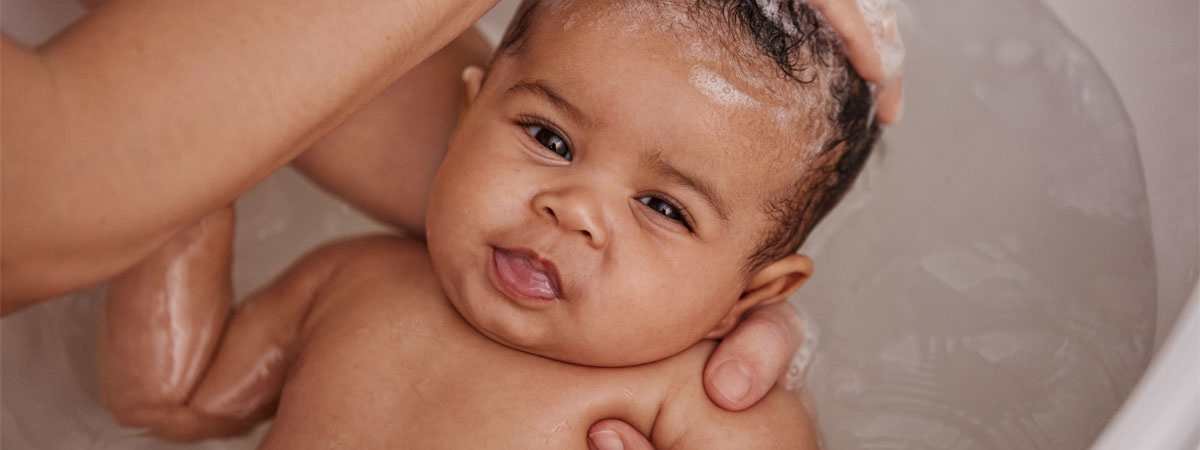Cradle cap in babies
If light yellow or dark flakes appear in your baby’s soft hair or scalp, then your baby most likely has cradle cap. Cradle cap is completely harmless, but can be hard to resist picking at.
Cradle cap is a type of eczema that often appears on the scalp and sometimes on the baby’s forehead and eyebrows. It looks a bit like dandruff with large scaly areas, but is not the same thing at all. Cradle cap is completely harmless, it’s not contagious and it disappears by itself over time. There’s no need to treat cradle cap unless you want to, babies don’t tend to be bothered by it unless there’s a lot of it – in which case it may itch a little.
Tips for treating cradle cap
Even if cradle cap is not dangerous or bothersome to your baby, you may want to remove it. If you want to try to get rid of cradle cap, our top tip is to apply baby oil to the scalp and leave it to soak for a while.
Here’s what to do:
- Apply baby oil to your baby’s scalp. This is because oil softens the scales and makes them come off a little easier.
- After a while, wash your baby’s hair. Many people suggest that it should be left on overnight, but it tends to make the bed messy and is not really necessary. Half an hour is usually enough. Washing with water is often all you need, but if your baby has a lot of hair, you can also use a mild, unscented baby shampoo to get the grease from the oil out of the hair.
- Then rub your baby's scalp gently with a towel or remove the scales gently with a fine-toothed comb – a lice comb can be used if you have a gentle hand.
- You can then do this again a day or two later if there are still scales.
Cream for cradle cap
You can also get rid of scales by applying creams made from borage oil to your baby’s scalp. The cream is available over the counter in pharmacies and helps the skin to heal but can also be used as a preventative measure. However, it can be quite strong smelling so if you like to sniff the lovely baby scent from your little baby’s head, it might be a bit of a deal breaker. In more difficult cases where the scales do not disappear, there are cradle cap creams containing salicylic acid and Vaseline. These can be found over the counter in pharmacies, but it’s important to talk to your healthcare provider before using them.
Why do baby’s get cradle cap?
It is not entirely clear what makes cradle cap so common. What we do know is that it is not related to a lack of hygiene, and allergies do not play a role either. It may be due to the fact that the skin lacks oil and therefore has less protection. Over time, babies grow out of this issue, and cradle cap too. In some children, however, it can last a long time and it is not uncommon for older children to have cradle cap on their scalp. It is also thought to be due to a type of fungus that is naturally present in the skin, but in greater quantities in babies who have a lot of cradle cap.
Please note that all information above is based on Swedish recommendations.



